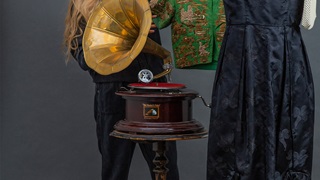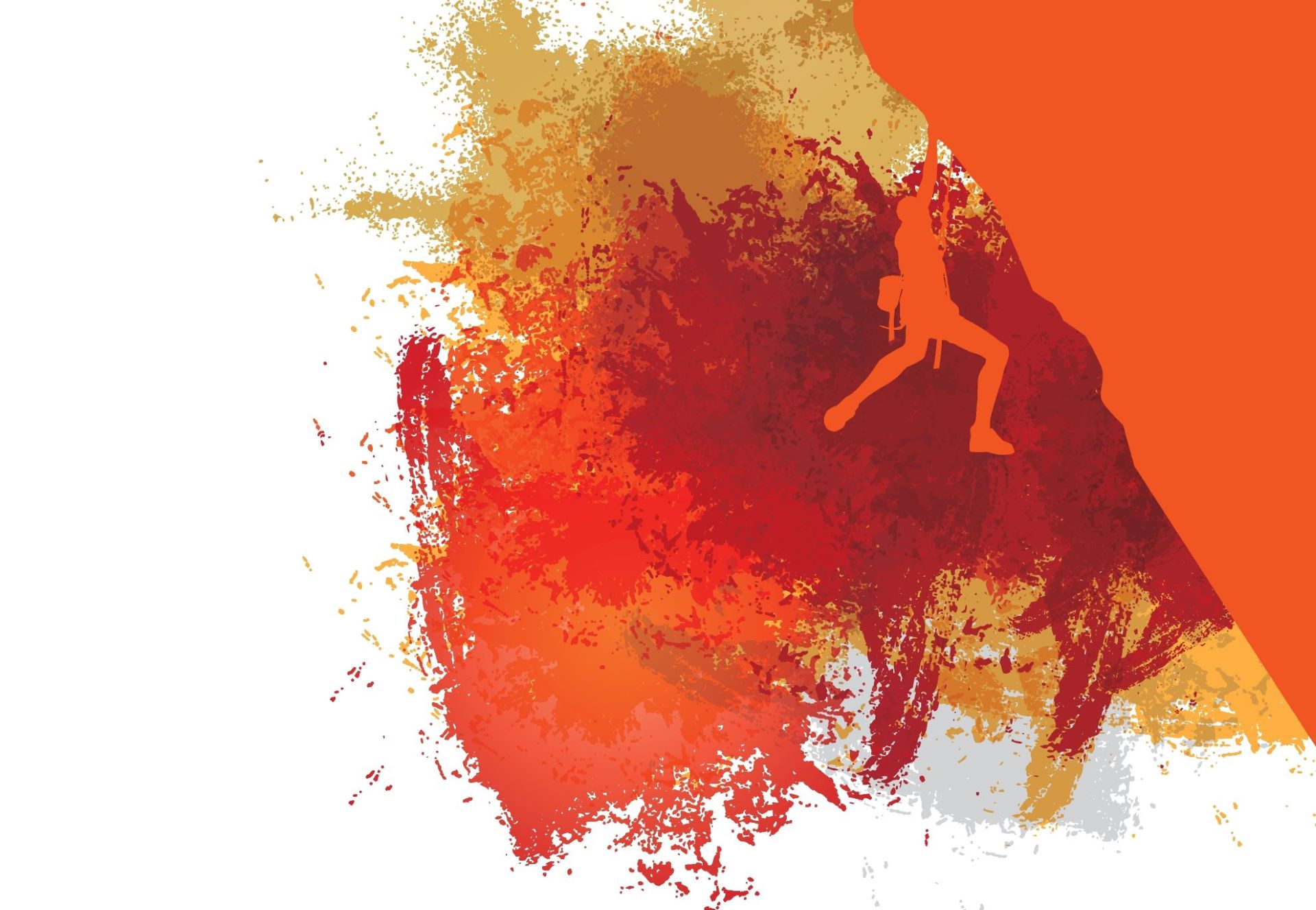
Style
There's more than one way to live in style


For my fiftieth birthday, I spent three weeks climbing the Eiger. I have climbed in the Rockies, the Himalaya, Bolivia, the Swiss Alps. I like the excitement. Last fall, I climbed for two months in Nepal. The April earthquake was heart wrenching. More than eight thousand dead. Tens of thousands injured. The people of Nepal had next to nothing; and now they have even less. Climbers almost always have the possibility of death hidden away in the back of their mind. But when others raise concerns, we dismiss them, saying ‘we know what we are doing’. The tragedy of Nepal reminds us how dangerous these mountains can be.
Nowadays, I forget what I had for lunch. But memories of whitewater rafting trips I took a decade ago are so vivid it’s as though they happened yesterday. When I was in college, I landed the summer job of a lifetime—professional whitewater guide in the Grand Canyon. The passion took hold: since then I have managed to raft river on six continents and write ten books on river running. Rafting offers a compelling fusion of nature, danger and camaraderie. Your raft enters the sleek, sharply tapered tongue—a sliver of smooth green silk unfurled before the churning white water. Seconds seem like hours as you plunge toward the watery abyss. Like flotsam in a whirlpool, the raft rocks from side to side as it flashes past the huge holes of the cataclysm. We eat its wall of water and paddle hard to keep from being washed into the rocky depths. Travelling down a ribbon of emerald green in a deep, secluded valley has this powerful, but contradictory, impact: at the same time it quickens the pulse, it stills the soul.
Paragliding is pure passion. I started with a tandem flight in the Dolomites, but am now hooked at doing it by myself. I started my solo training in the summer of 2011 in Austria and got my paragliding licence that September. Since then I have had many flights in various flight areas like the Dolomites, the Alps and Slovenia. Every flight is exciting. Before a flight I do a detailed weather check of the wind direction, wind force, clouds, thermals and the forecast for the next few hours. After some big, fast steps, I am in the air, enjoying the spectacular landscape. You can feel freedom and silence and sometimes you can fly with eagles. But you must concentrate at all times because of changing weather conditions and other pilots in the air. I prepare the landing early enough to negotiate the wind direction and wind force at the landing area. I get out of my harness and, two metres above ground, I pull through the brake lines and touch down softly.
I learned how to rock climb from my older sister, Shara. She’s still the real expert, doing hardcore deviations like ice-climbing up frozen walls, chipping the holes with an ice axe as she climbs. We started by climbing up boulders on the rocky shores of the Pacific Ocean, then began setting routes up the tall cliffs of Smith Rock, Oregon. Our most recent trip—deep-water soloing in Krabi, Thailand—involved climbing with no harness, but over water, so a fall would not necessarily be fatal. We island-hopped between small islands with large, overhanging cliffs. We would jump out of the tiny boats, swim to a shaky rope ladder hanging down from the rocks and then climb up the cliffs until fear (or good sense) overcame us and we jumped off into the deep water below— before climbing up again. If I’m going over ten metres when deep-water soloing, the sea will feel very solid when I hit it. I tend to jump off before I get that high. There is still a danger element : I could hurt myself by falling from high up or in the wrong position or by bumping the cliff, but the chances of death are definitely minimised.
Imagine yourself standing on the top of a mountain. Clear blue sky. Mountain ranges. Deep, white, untracked snow. You jump off and then float down the incline. You feel like you’re flying, floating through mid-air. That’s what it’s like to ski deep powder snow. It’s addictive. Canada is my country of choice for heli skiing. There are remote lodges in British Columbia with a ski area half the size of Switzerland. I first went to the Cariboos lodge in 1990—it was accessible by helicopter only after a seven-hour drive from Calgary through the Jasper Ice Fields. On a good day you will get ten or more drops, with vertical descents of 1000+ metres. Lunch is helicoptered in. Snow builds up around the trunks of trees and can be deep. Two years ago, a guide fell down a tree-well and suffocated. Four years ago, one of the skiers ignored instructions and fell down a crevasse. He lost one ski but the other wedged at about fifteen feet below; the guides managed to pull him out after an hour and a half. There was a fairly ‘extreme’ celebration in the lodge that evening.
I scuba-dive for that feeling of weightlessness: it must be close to how astronauts feel in space. And it’s a different world under water, you see everything differently. It’s possible to dive in most types of water around the world, including lakes and rivers, as long as you have the right gear. Extreme conditions only affect how long your dive lasts. Before you perform a dive you must be familiar with how your equipment works and check that it is in good condition, as you rely completely on it. The regulator, air tank and pressure gauge are the most important pieces, as well as the dive computer, which measures the time and depth of a dive, and the buoyancy compensator device, which stops you from sinking or going up too quickly. Too quick a descent can lead to nitrogen narcosis and too quick an ascent can lead to a higher risk of embolism. If any of those devices fail, you could be in danger: that’s why nobody dives alone. The ‘buddy system’ makes scuba diving a fantastically social sport.
The first rule of mountaineering is ‘getting to the top is optional: getting down is mandatory.’ I have scaled two of the Seven Summits and have tackled Everest base camp, Island Peak, the Rwenzori range in Uganda, Mt Rainier and Colorado. The sensation is awesome. There’s the climb itself; the exhilaration of standing on the highest peak of a continent, ice pick in hand, crampons tied to boots; and the relief of getting off the mountain. This sensation is what keeps me going on extreme adventures. Every scrap of my experience pales in comparison to what occurred on Mount Everest this year. I am grief-stricken.
I grew up on the coast of New South Wales in Australia. My first bike was a Honda XR100 that I literally rode until I blew the engine up. I enjoyed years of riding with friends through bush tracks to beaches, but I was most happy at a nearby quarry where I laid out a circuit with jumps, stutters and tight corners. My first race bike was a steel-framed Honda CR125. I broke the frame after a particularly big jump. Freshly minted with my first job, I took out a loan for an aluminium-framed bike. I raced at Moruya Speedway which had a motocross track on the inside of the flat track. The Speedway already has quite a heady atmosphere with the smell of two-stroke mixed in with the sounds and smells of massive sprint cars, but the rush that you feel when the starting gate drops and twenty bikes start racing toward what seems like a very, very narrow first turn—that is something else. My folks tolerated rather than supported my chosen sport, so it was a touch ironic that, at the first race they came to, they saw me stretchered off in a neck brace with suspected spinal injuries after landing headfirst off a jump.
I’ve been climbing for twenty years: it’s part of who I am. Before that I was a gymnast. Right now, I’m more of a ‘social climber’. Before children, I was national champion. It ticks all the boxes for me: the physical workout along with the mental demand to problem solve and control your fears. One has to have a ‘hang in there’ attitude. Climbers can spend years working on getting up specific routes. In 2001, my husband and I road-tripped around the US, via all the well-known climbing spots in the Western states. We were climbing in a town called Rifle, Colorado when 9/11 happened. I suppose I rationalise away the risks. I follow the rules and I’m respectful of the situations I find myself in. I climb on fixed protection; I get my belayer to check my knot before I set off and we check each other’s harnesses. If you become complacent, accidents happen. I have lost friends to climbing accidents. I don’t think about how high I am. You have to completely focus on the section of rock that you are trying to climb, particularly when some holds are as tiny as the edge of a credit card.
My dad was a rev head and for as long as I can remember I have been into cars. I would nag him to let me drive his big V8s up and down our driveway before I was ten. These days I race my street car called Boris. It’s a Nissan Skyline GTS, single turbo 2.5 litre engine. It looks standard, but pushes 400 mechanical horse power, or 300 kilowatts. It’s a bit of a weapon. I’m a member of a car club that regularly hires different tracks. 150 entrants race against their own best times. We aren’t supposed to race each other, but it’s hard not to when you have big boys in very fast cars coming at you. The thrill of that cat-and-mouse chase is awesome and doing it at over 200 kilometres an hour on the edge of not only the car’s capabilities but your own sanity has me shaking with adrenalin at the end of every run. I also drag-race my car, enjoy riding both dirt and road bikes and have been an avid snow-skier since I was three. I am so grateful to have this extreme fun in my life.
Mark Miller and Tom Valentine were writing shortly after the 2015 earthquake in Nepal
© Norton Rose Fulbright LLP 2025